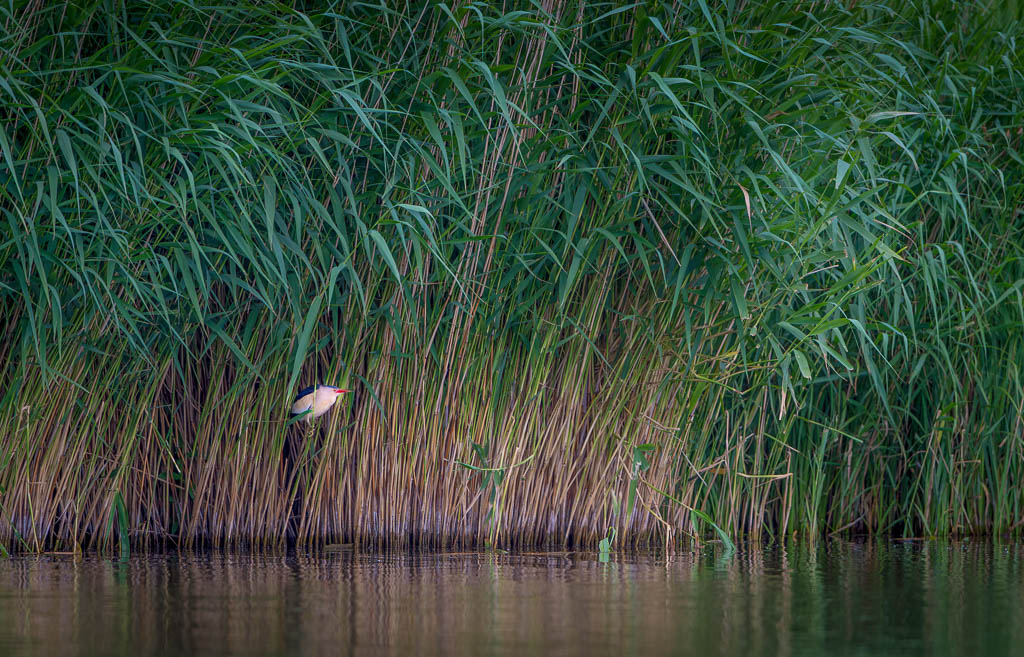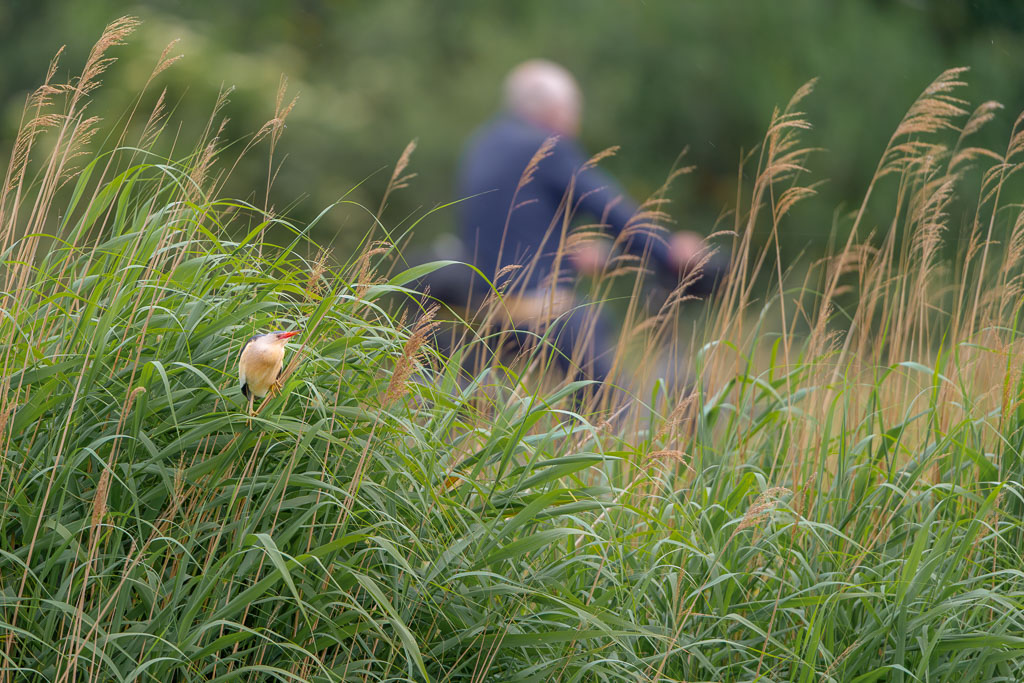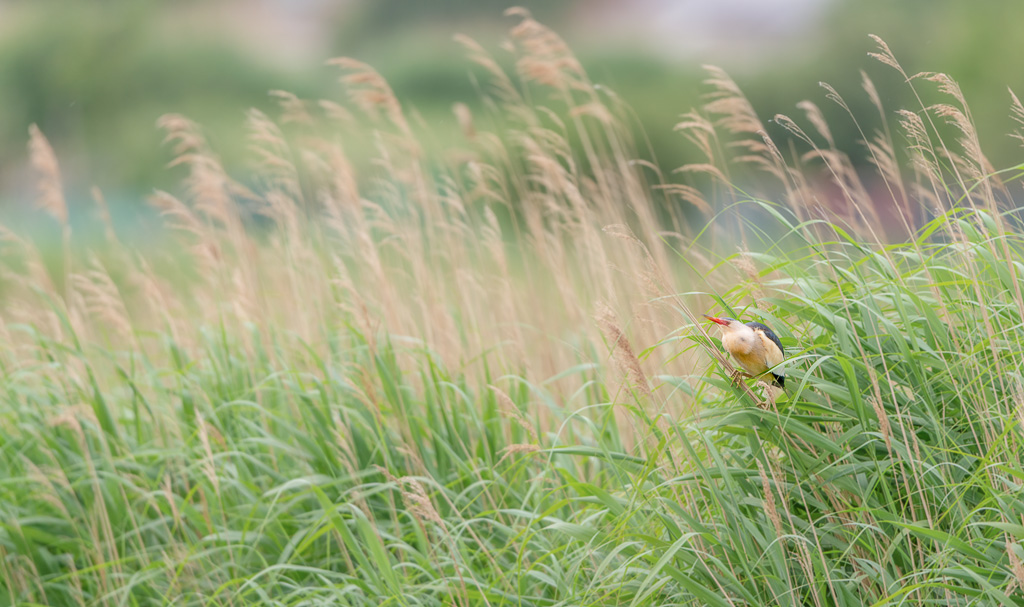
Over the years I have had my share of Little Bitterns, but still it’s great if you get the chance to see one. And that’s not always that easy. First of all they tend to be rather secretive, spending most of their life hidden in the reed beds. What doesn’t make it any easier, is that they are pretty small. Hence the name I guess 😉 . On most pictures it’s hard to tell their exact size though, so I was happy that this Spring I could take a shot with a cyclist in the background – this gives some idea about their relative size. But, what makes it most difficult to see them, is that there are (unfortunately) hardly any left in The Netherlands, some 20-40 breeding pairs in Summer. Which makes them obviously seriously threatened as a breeding species for our country. This Spring I heard and saw several nevertheless, but usually they were almost completely hidden or could be seen only from quite a distance. Only on two occasions I had a bird pretty close, and luckily these encounters rendered some nice images. The bird in my images was ready for a partner, as you can tell from the bright red bill. After mating, the bill turns back to yellow, which is how we know them from their wintering grounds. To get an idea, please have a look here. Besides that they are calling for a female in Spring, it’s also this red bill that makes them a little easier to find. All in all, it was not a bad season for Bitterns: both Little and Great Bittern played along this year.
In de loop der jaren heb ik mijn aandeel Woudapen wel gehad, maar het is altijd geweldig om er weer eentje te zien. En dat is niet altijd even gemakkelijk. Ten eerste zijn ze nogal op zichzelf en leiden een verborgen leven in de rietkragen. Wat het ook niet gemakkelijker maakt is dat ze best klein zijn. Vandaar de Engelse naam denk ik 😉 . Op de meeste foto’s is het echter lastig te zien hoe groot (of hoe klein) ze nu precies zijn, dus ik was blij dat ik dit voorjaar een foto kon maken met een fietser op de achtergrond – dat geeft enig idee van hun relatieve omvang. Maar wat het het lastigst maakt om deze soort te zien, is dat ze (helaas) bijna niet meer in Nederlands voorkomen, zo’n 20-40 broedparen in de zomer. Dat maakt het voor Nederland een ernstig bedreigde broedvogel. Dit voorjaar zag en hoorde ik er desondanks toch enkele, maar meestal zaten ze erg verstopt of kon ik ze alleen van grote afstand bekijken. Op twee momenten had ik er echter eentje dichtbij, wat gelukkig ook wel leuke plaatjes opleverde. De vogel in de foto’s was helemaal klaar voor een vrouwtje, wat je kunt zien aan de knalrode snavel. Na het paren kleurt deze weer terug naar geel, zoals we ze ook kennen uit hun overwinteringsgebieden. Voor een idee hoe dat er uitziet, kijk even hier. Behalve dat ze gedurende enige tijd in het voorjaar luid zitten te roepen om een vrouwtje (en je ze dus kunt horen), is het ook deze rode snavel die ze dan iéts gemakkelijker te vinden maakt. Alles bij elkaar was het geen slecht voorjaar voor de ‘reigerachtigen’: zowel de Roerdomp als de Woudaap werkten dit jaar netjes mee.






